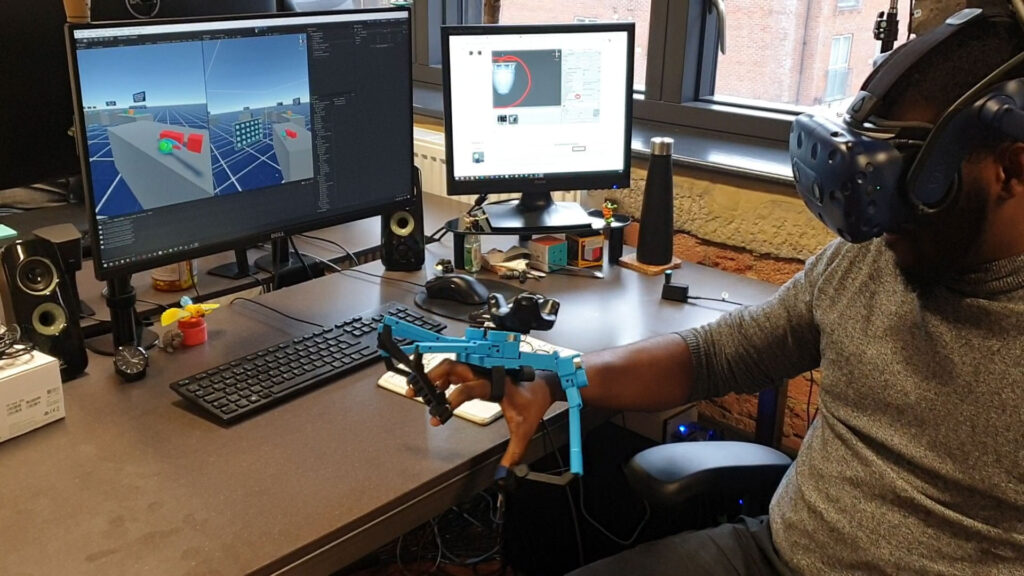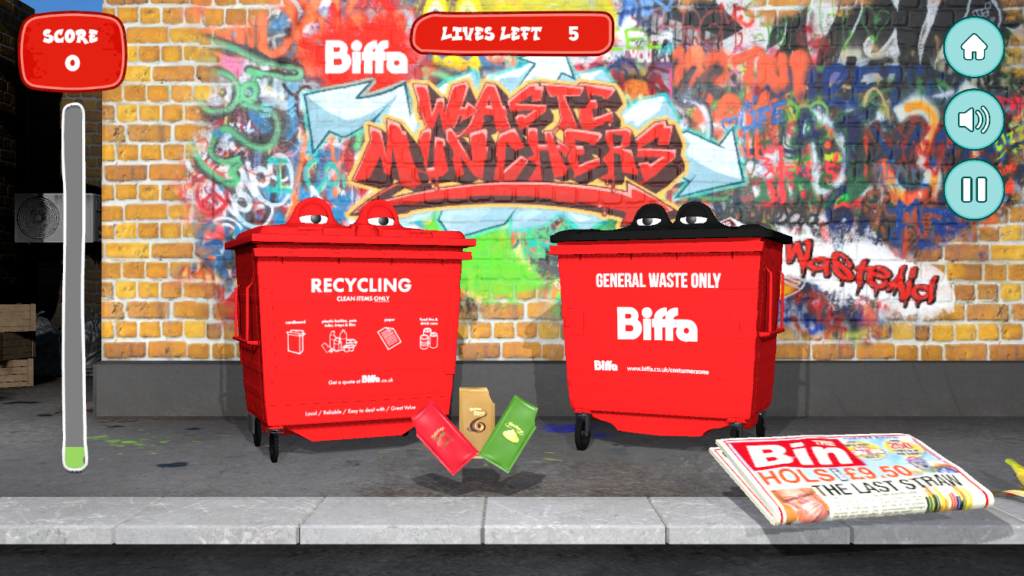Are you curious about virtual reality training and its applications to the workplace? Is it also slightly daunting trying to look into interactive learning when it can seem like such a huge leap from even the digital e-learning you’re used to?
Here at Sliced Bread Animation we’re experts in making immersive communications, from VR Culinary arts training to waste processing training apps, we use the game engine Unity to bring clients ideas to life.
But what is Unity and why is there so much discourse around it and its competitor Unreal Engine? Let’s take a look at what Unity is, why we use it instead of Unreal Engine, and how we can use it to help enhance your workplace.
What is Unity?
Unity is a game engine that game developers use to create interactive experiences. Just like you’d use Microsoft Word to write a story or a document, a game developer uses Unity to write code, which turns in to an interactive piece of media.
Unity is used by a huge number of game creators worldwide, with an estimated 3.6 billion downloads per month of applications made with Unity. You may have even seen its logo pop up when playing games such as Monument Valley, Beat Saber, Pokemon Go or Cuphead.
However Unity doesn’t have to just be used for traditional games; the software is already used for films to help with simulation and rendering. It is also used by teams like ours to create bespoke experiences for businesses and industries looking to utilise interactivity.
Why do we use Unity over Unreal Engine ?
If you’ve never heard of either Unity or Unreal Engine then all you need to know is they are two competing game engines, we have looked in to their differences more in depth in our blog post here. But why does Unity work so much better for us?
One key reason is that Unity is more geared towards use over a variety of different devices, from a phone, to a computer, a touch screen to a VR headset; Unity accommodates all of these different devices. This means we can not only use it for a variety of different projects, but if a client wants to take a VR experience and repurpose it into a phone app, we can do this using Unity.
Unreal engine on the other hand is made to create extremely sophisticated games exclusively for devices such as high end gaming computers or consoles such as PlayStations or Xbox, which wouldn’t be accessible to most of the clients we work with. A key reason Unreal Engine only accommodates these high spec platforms is so that the games created can have extremely high definition graphics.
However having hyper realistic graphics isn’t something we often need in our projects due to their focus on learning over aesthetics, for instance considering our fire safety training; although hyper realistic graphics would look great, the training itself doesn’t need them, and could even take away from the key learning points throughout the course.
Unity is also made for what are called ‘indie game developers’, which basically means small scale companies that want to make something unique. And although we don’t make games, this is where we are the target for Unity instead of Unreal. To create the rich and complex environments and graphics that Unreal is made for, it would take a huge workforce to create, develop, test and deploy, something that would again, make no sense for the kind of educational experiences we make.
As a small business, Unity is made for teams like ours which aim to create immersive, interactive and unique experiences that focus on our clients needs.
What do we use it for?
So what do we use unity for? Lets look at some examples:
Gamified training apps
Many companies are turning to gamified training, such as Biffa, who worked with us to create Waste Munchers. Apps like this take what could be hours of learning and resources to go to, and not only distils the training in to a fun and interactive experience, but it also makes the learning far more accessible and easy to distribute.
Immersive VR training
Taking this interactivity further, some companies even work with us to create VR training. VR training is useful for a huge range of industries, from construction, to medical, and even for chef training.
VR training allows students to be immersed in the environment that they need to apply their training, which can increase the retention rate hugely. VR training in this way can also have a number of benefits that each industry can usually encounter with traditional training. Take fire safety training, its nearly impossible to guarantee engagement and retention with traditional teaching methods, however if the content isn’t retained then it could have life threatening consequences. VR not only increases engagement and retention, but by putting the learners in to an immersive environment where the learning applies, they’re more likely to recall the information when it matters most.
VR Educational experiences
We also use Unity to create immersive educational experiences for a variety of different industries. Many businesses struggle to create educational pieces or marketing campaigns that engage their audience and stand out from their competitors. VR is a great way to create an exciting, immersive experience that will increase engagement.
Educational experiences like our Diabetes Voyager game is a great example of a subject matter that would usually be dry, and turning it into a fun, exciting and most importantly, a memorable experience.
Why is interactive and immersive communication so popular and effective?
If you’re already curious about immersive education, it’s important to also consider why it’s something we’re so passionate about. So what are the benefits of this type of communication, and why should you be considering it for your workplace.
Firstly interactive education is shown to have a higher retention rate, this means that whether your training be as simple as a phone app, to something more complex such as the VR training examples we’ve given, incorporating interactivity in to your training will vastly increase the effectiveness.
This is due to the fact that you can’t sit back and passively take in information like you would in a traditional training setting. If the lesson is interactive, it forces the individual to participate in their learning, which means they are more likely to remember what they are being taught. If you think about it like classroom teaching, you probably remember the science lessons where you were carrying out an experiment way more than the lessons where you were just listening to your teacher.
This engagement is exactly why unity has become such an essential part of our toolkit here at Sliced Bread. With Unity, we can not only incorporate interactivity in to any subject matter, it gives us the tools to adapt this interactivity to benefit our clients best.
What can we make for you?
Hopefully now you have a better understanding of what Unity is and how we use it here to create bespoke gamified training and educational experiences.
Want to tap in to gamification, e-learning and immersive training? As we’ve shown utilising unity to create something bespoke, effective and engaging is what we do. Get in touch today to find out how we can work together and create something that can benefit your business.











